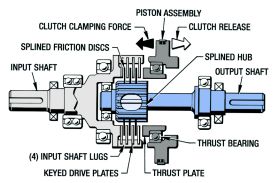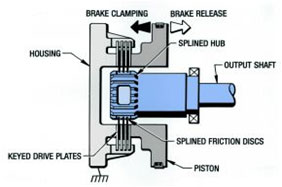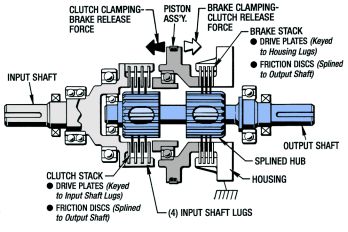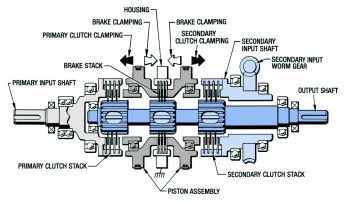Basic Design – Posidyne Clutch Brakes and Posistop Brakes
An Inside Look at How Posidyne Clutch Brakes and Posistop Brakes Operate
The Force Control Oil Shear products come in several varieties of clutch and brake combinations including clutch only, brake only, combination clutch and brake, and a dual clutch brake unit.
This unique design assures there is never any overlap of clutch and brake, provides internal circulation of the transmission fluid, and minimizes inertia.




